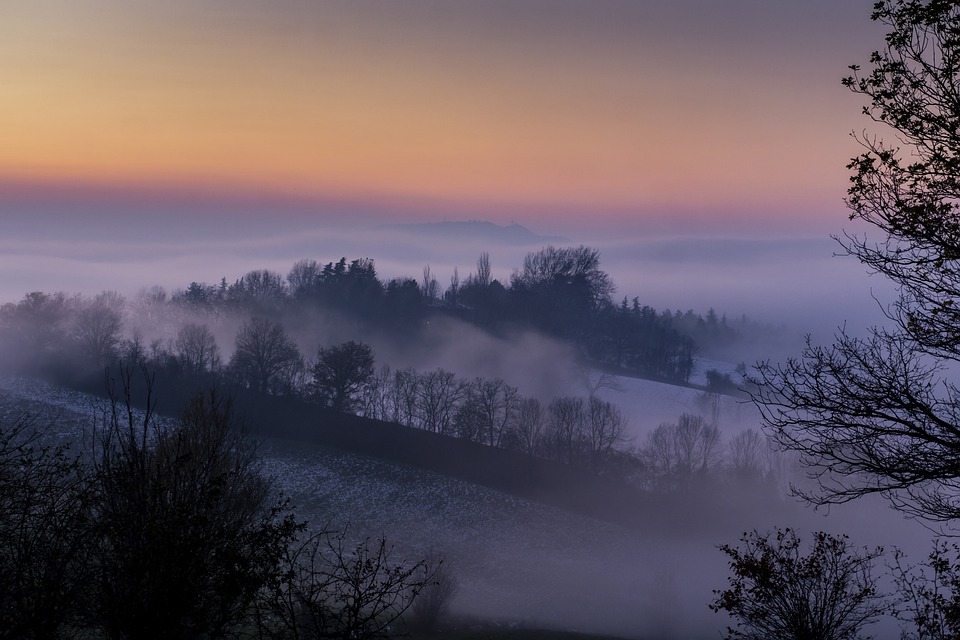
In winter, valley fog can hang stubbornly in lower elevations of the Great Basin, as well as California's Central Valley, as the combination of warmer air aloft moves over an area just soaked by the storm. Parts of the northern Gulf Coast and California coast can also have frequent fog, if not always dense fog. Of course, morning fog makes up the lion's share of these days, after which late-morning/afternoon sunshine is plentiful.

The Appalachians, parts of northern New England and the Pacific Northwest each typically see at least 40 days a year with dense fog (at least one-quarter mile visibility or lower). (Image courtesy: NOAA) Most Fog-Prone Areas Areas with most frequent fog are shown in darker gray, red shading. We have an example in the slideshow above.Īverage days per year with dense fog (defined as reducing visibility to one-quarter mile or less) in the U.S. Hail fog: On rare occasions, accumulated hail at the surface can chill the near-surface air enough to produce a shallow veil of fog.Upslope fog: Air moving gently upward in elevation enough for the layer to reach saturation, such as behind a winter cold front in the High Plains and Front Range of the Rockies.Eventually, the cold air moistens sufficiently to produce fog. Frontal fog: If warmer raindrops fall into colder, drier air, evaporation occurs.Some other, less common fog types include: You can typically see wispy, vertical currents of fog rising from the lake. The mixing of cool air chills the warmer, more moist air immediately above the lake to allow condensation and a cloud to form. Cold air overlaying warm air near the warm lake surface is an unstable configuration, lending itself to rising air. You may also notice steam fog from some lakes in the fall or early winter. This ice fog is common in the winter months in parts of Alaska's interior, among other locations closer to the poles. These freezing fog events can be dangerous not only for a reduction in visibility but also for a light accumulation of ice on roads, particularly bridges and overpasses.Īt even colder temperatures, fog made up solely of tiny ice crystals will form. When surface temperatures are below freezing, water droplets in a fog are supercooled, waiting to freeze on contact with any subfreezing surface. Unlike radiation fog, advection fog can sometimes be seen as moving laterally along or near the ground. Warm air moving over snow-covered ground in winter and sea fog drawn inland over a cool land surface along the West Coast are two prime examples of so-called advection fog. Sometimes fog forms when warm air moves over a cold surface. A typical ground fog will dissipate first at its edges, where its depth is more shallow, working its way toward the thicker center of the fog. Fog does not burn off, per se.Īs solar energy heats the ground near the fog's edge, vertical mixing brings drier air into the fog's edge, evaporating it. This valley fog, really just a type of radiation fog, results from cold, dense air draining down mountain slopes at night, collecting in the valley floors, then forming as any other radiation fog described above. Often in the fall, you'll see morning fog hug lower valleys of the Appalachians. If just enough light wind is present – a couple of mph, at most – this chilled air can be gently stirred through a deeper layer, forming a deeper radiation fog. and sunset is at 7:12 p.m.The most common form of fog, known as radiation fog, typically occurs on clear nights as the earth's surface cools moist air immediately above it. “Normals” for this time of year are highs of 19 C and lows of 9 C. There’s a 60 per cent chance of showers Tuesday night. Mixed skies and even warmer temperatures are expected Monday and Tuesday with highs of 26 C and 25 C and lows of 13 C and 14 C.

The weekend looks gorgeous with sunny skies forecast for Saturday and Sunday, highs of 23 C and 22 C and lows of 9 C and 11 C. Wind becomes south at 20 km/h late in the morning. The forecast low is 10 C Thursday night with more fog patches expected to pop up after midnight then dissipate Friday morning.įriday’s forecast is summery and even a bit sticky with a high of 26 C and humidex of 33 under mixed skies. The expected humidex is 25 with a UV index of 5 or moderate. When the fog burns off - conditions will improve later in the morning - the forecast is for smooth sailing with mainly sunny skies and a high of 23 C Thursday. The next issue of Ottawa Citizen Headline News will soon be in your inbox.


If you don't see it, please check your junk folder. Manage Print Subscription / Tax ReceiptĪ welcome email is on its way.National Capital Region's Top Employers.


 0 kommentar(er)
0 kommentar(er)
